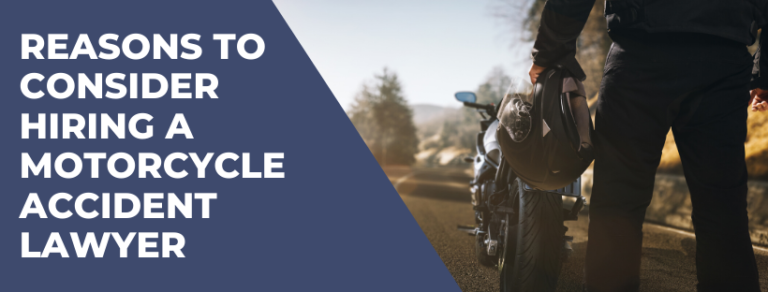Motorcyclist Safety
Driving next a motorcycle is different than driving next to other vehicles. Motorcycles are often smaller and harder to see. They don’t have the safety of metal framing, seatbelts, or airbags to protect the rider in a vehicle collision. This is why drivers need to learn how to share the road with cyclists and be careful to ensure that all parties arrive at their destinations safely.
Here are a few tips for drivers to help ensure motorcyclist safety:
Be Aware
Signal, check your mirrors often, and check your blind spots when merging or turning. These behaviors are good habits for drivers in general, but they’re especially important when you share the road with motorcycles. Because they’re so much smaller than the average vehicle, motorcycles can go unnoticed by a distracted or unmindful driver making a quick lane change. Low light or bad weather can also hinder a driver’s perception – so it’s important to be extra aware during these situations.
Large Vehicles = Greater Danger
If you drive a big truck or a van, you might already be aware that your vision can be limited in your vehicle. Your blind spots are larger than those of other vehicles, making it even more difficult to spot smaller cars and motorcycles around you. Be extra cautious when making turns or changing lanes by keeping in mind that in your truck/van, it might be more difficult for you to see a biker.
Give the motorcyclist the whole lane
Just because motorcycles are smaller, that doesn’t mean you can get away with passing them in the same lane. Give a bike the full lane, the same way you would with any other vehicle.
Treat motorcycle turn signals with caution
If you come up to a motorcycle with a turn signal on wait a moment to see what they’re going to do. Unlike with most vehicles, motorcycle turn signal aren’t self-cancelling so the biker has to manually turn the signal off. Give yourself and the motorcyclist a moment to make sure they are actually turning.
Give bikers extra following and passing distance
Many bikers often slow by only rolling off the throttle and downshifting (instead of braking), so you may not always see brake lights to alert you that a bike is slowing down or stopping. Allow for 3-4 seconds of following time for motorcyclists. Always assume a bike will brake when approaching a stop at an intersection. Drivers who cut-off or unintentionally pull in front of a motorcycle without allowing enough space can force the motorcyclist to overbrake, slide, and fall.
Bikers need to take precautions of their own, like wearing the right gear, having motorcycle insurance, and riding in the right part of the lane. But accidents happen. If you’ve been in a collision because of a negligent driver, contact The Clardy Law Firm to discuss your case.




